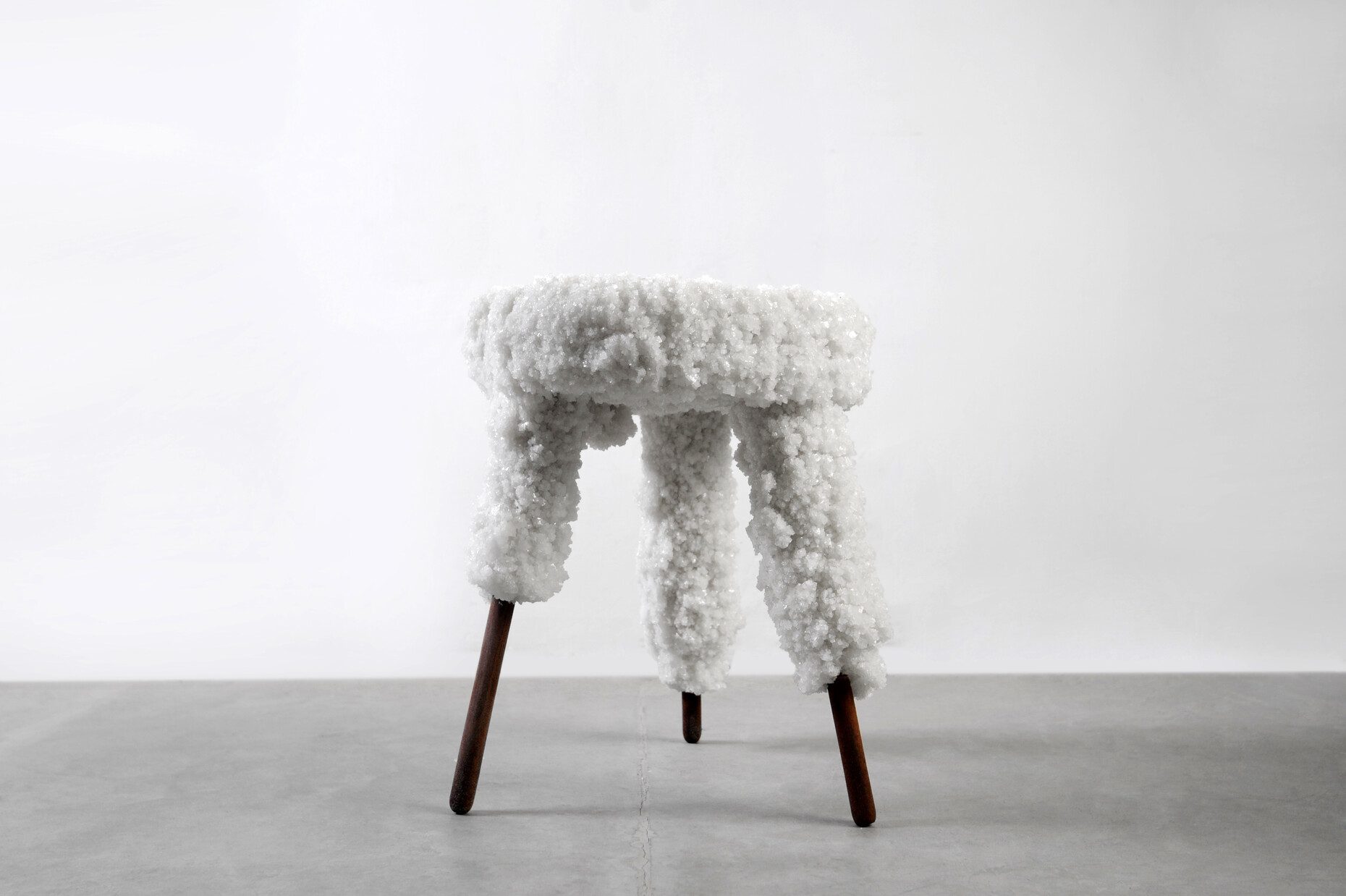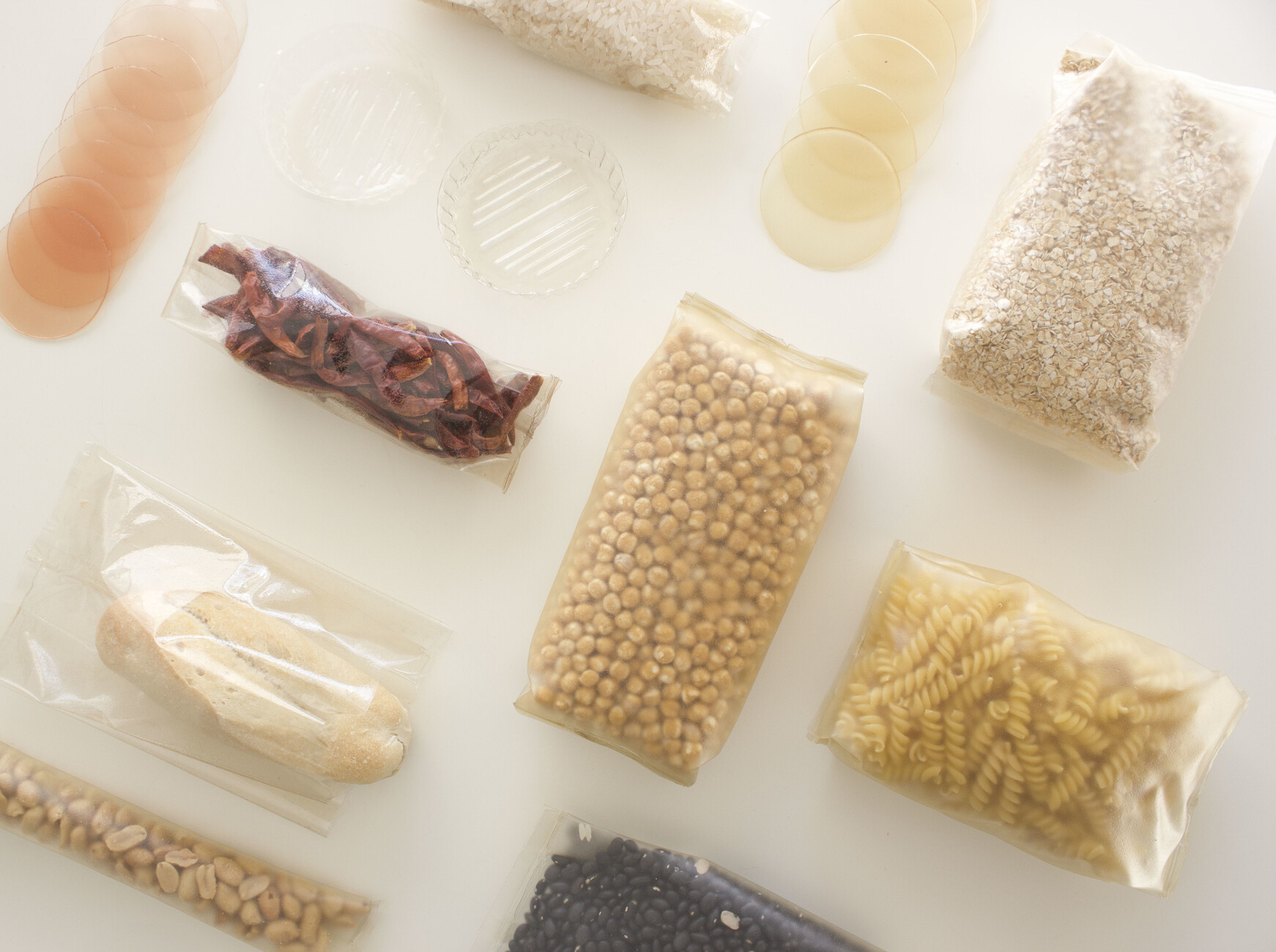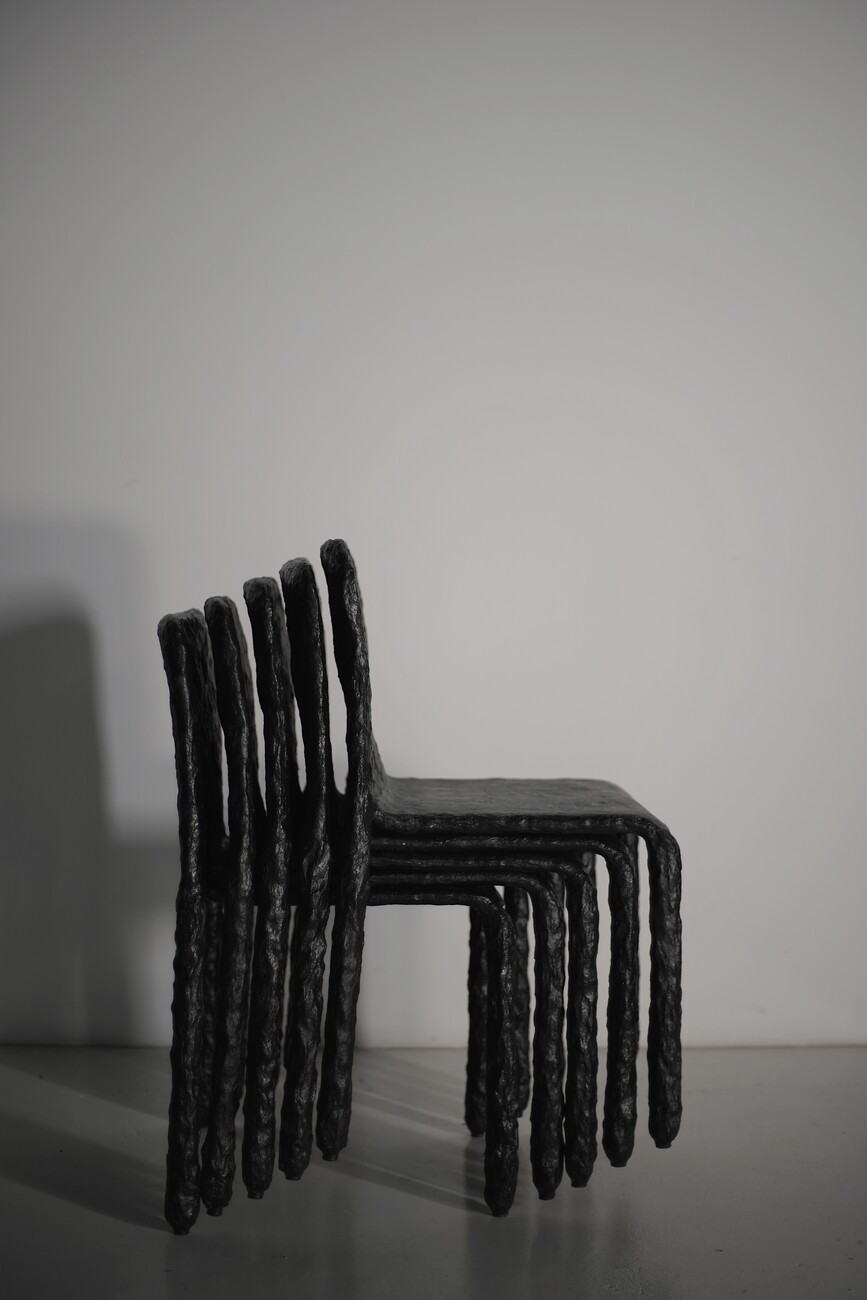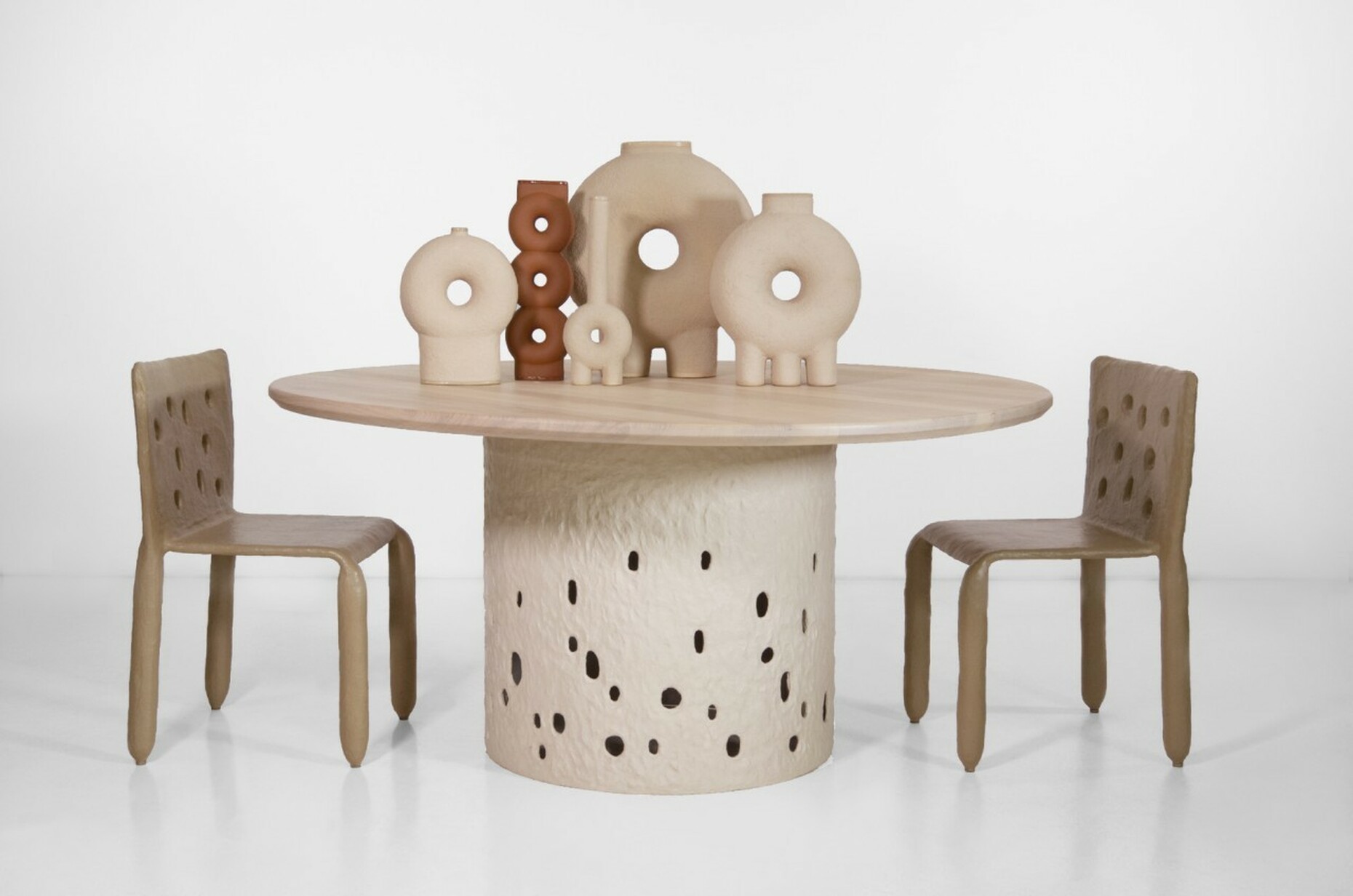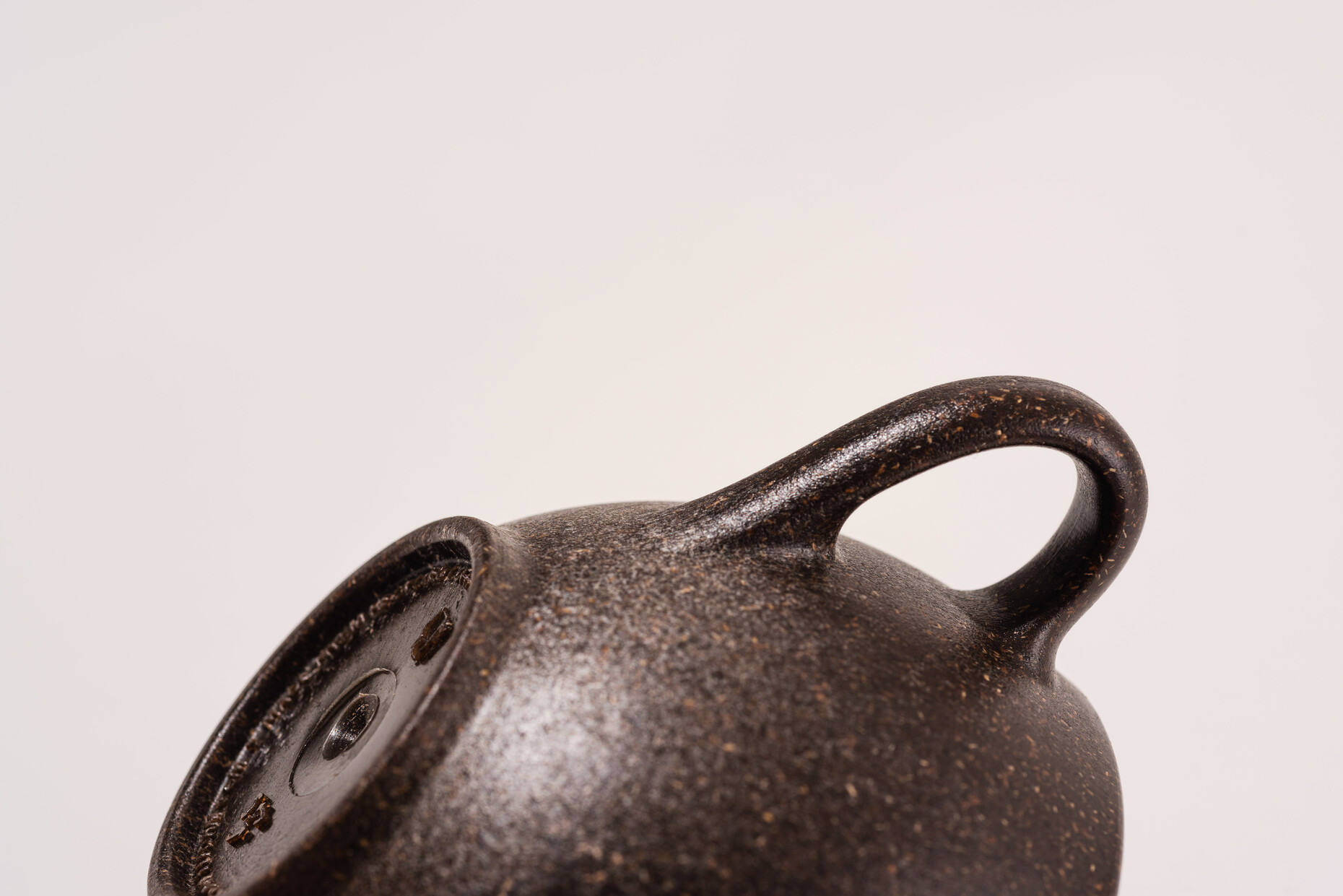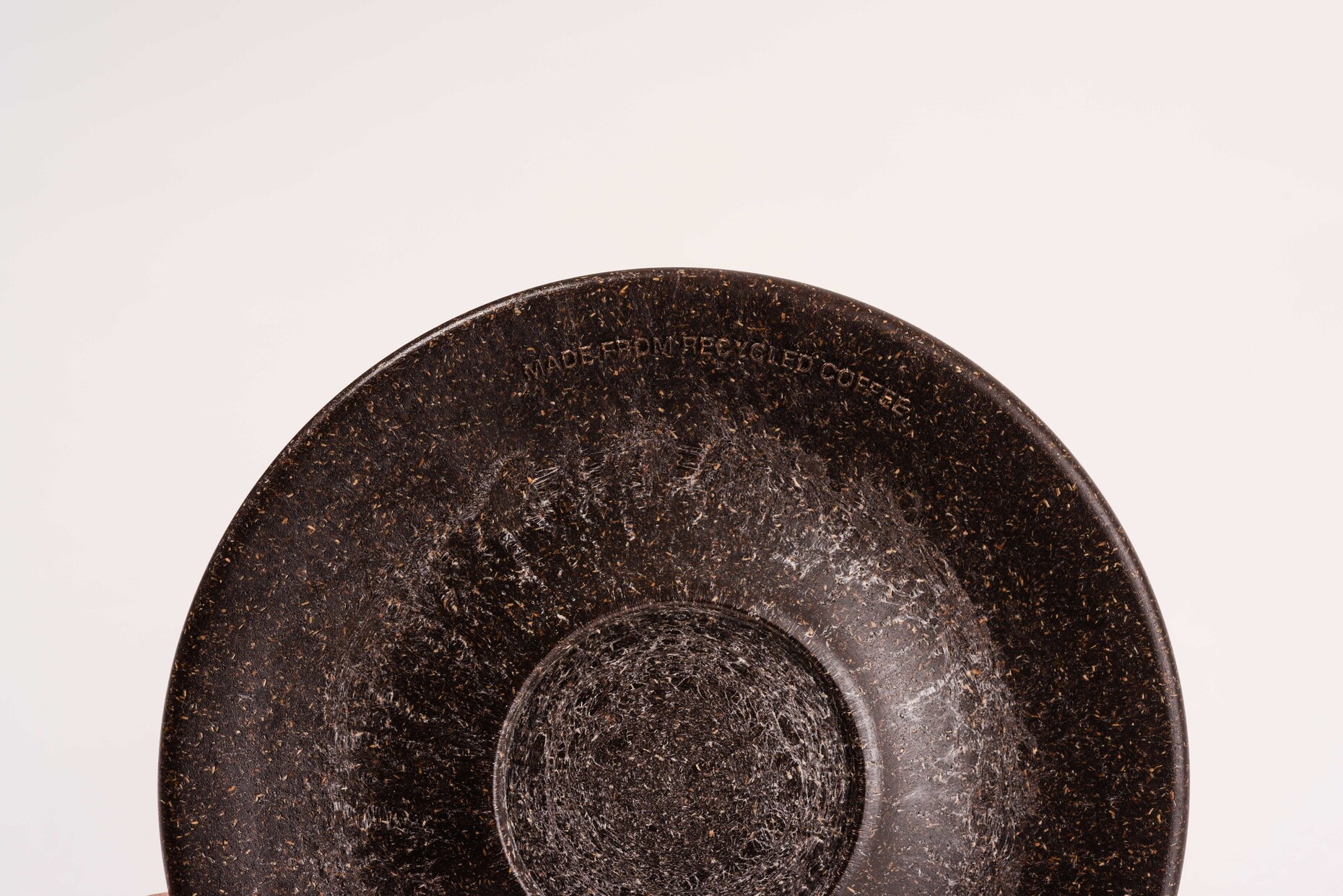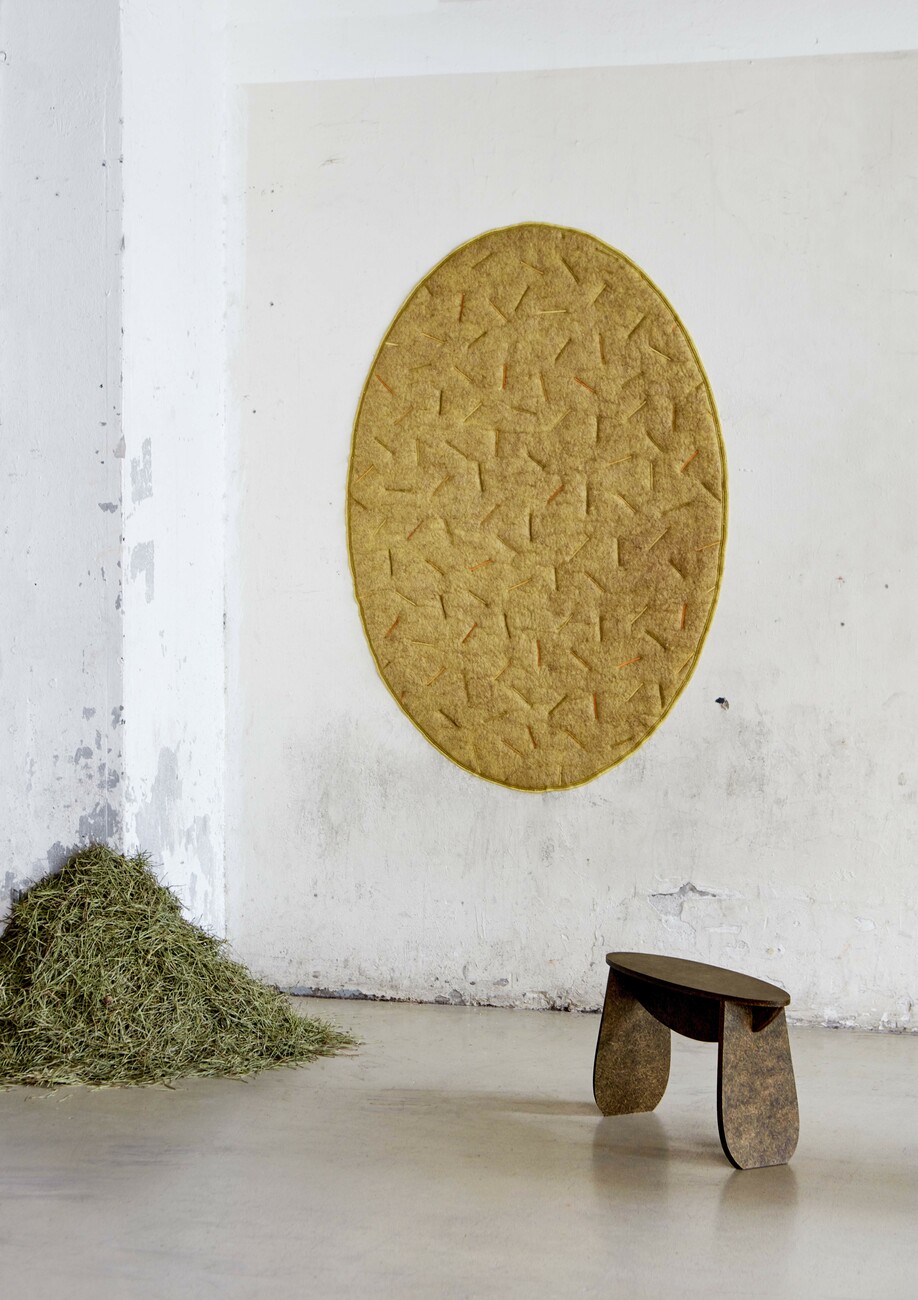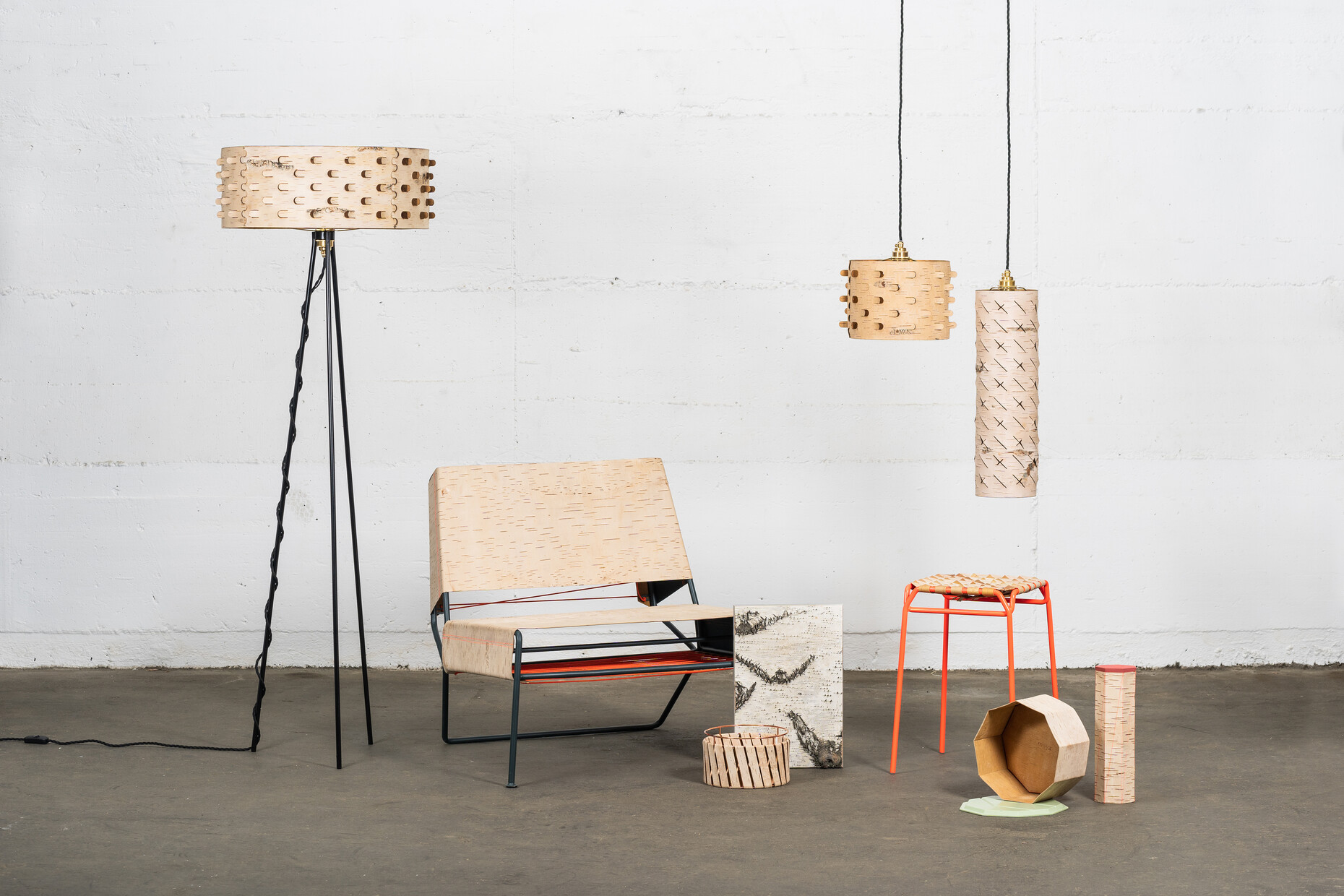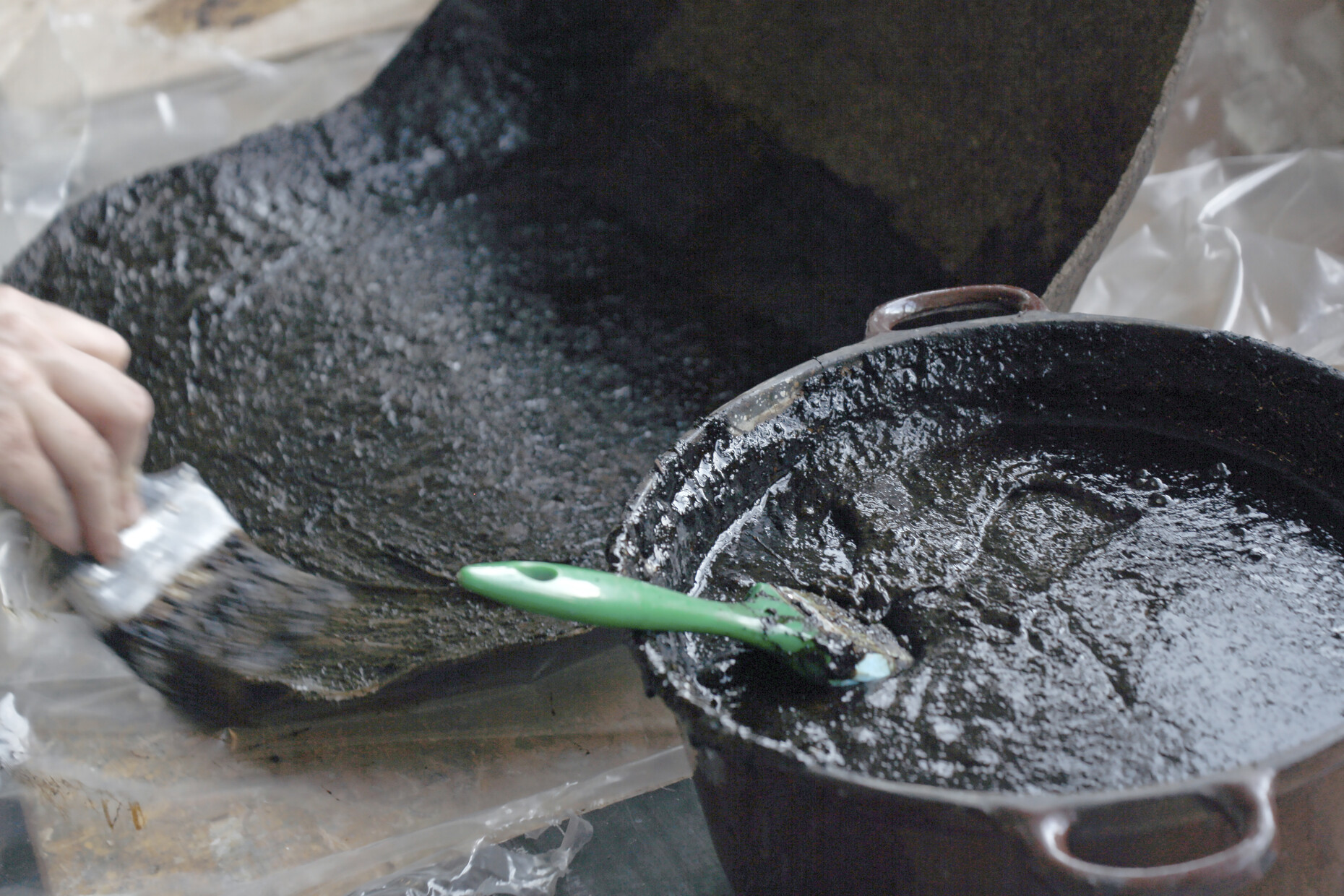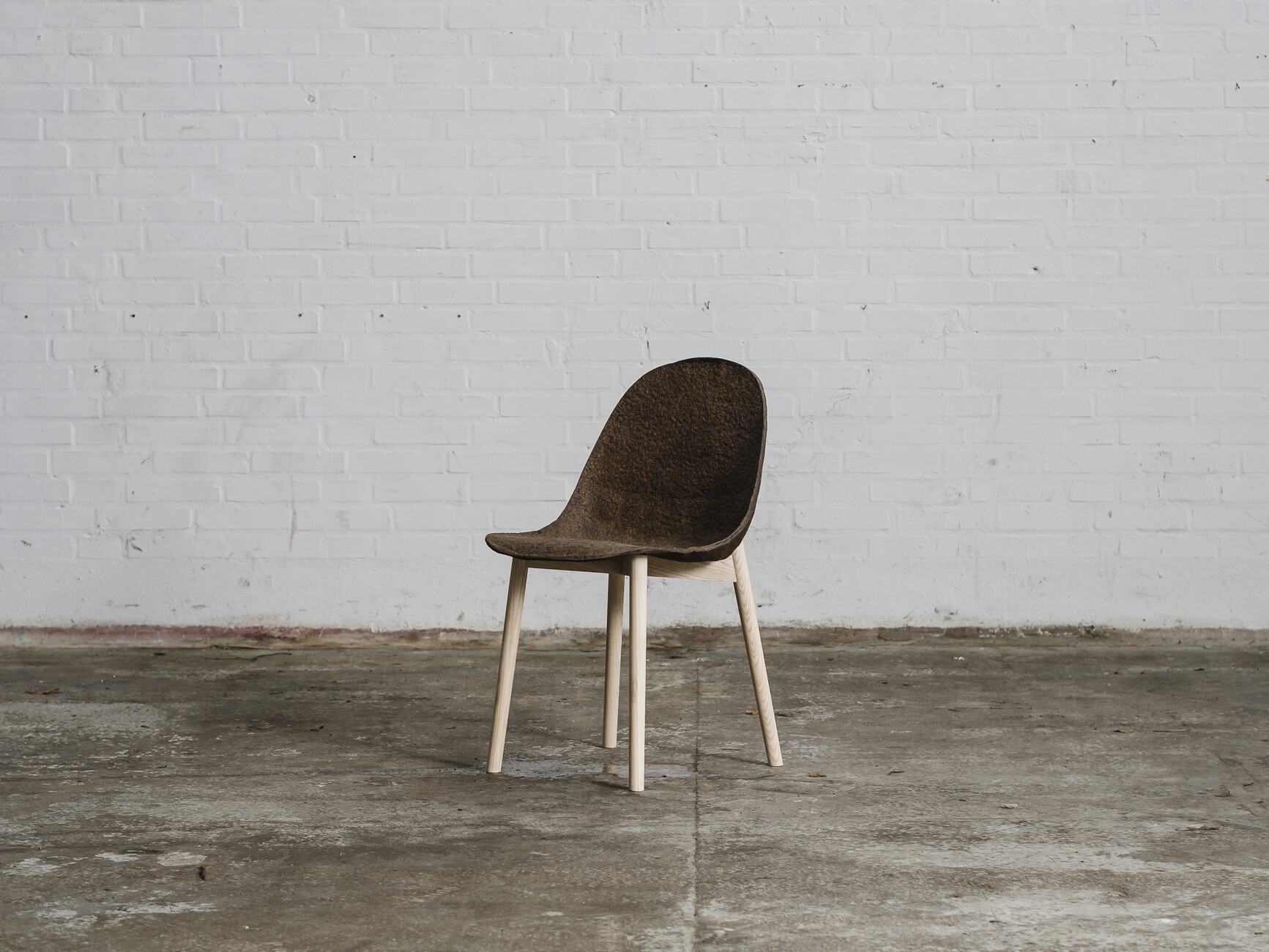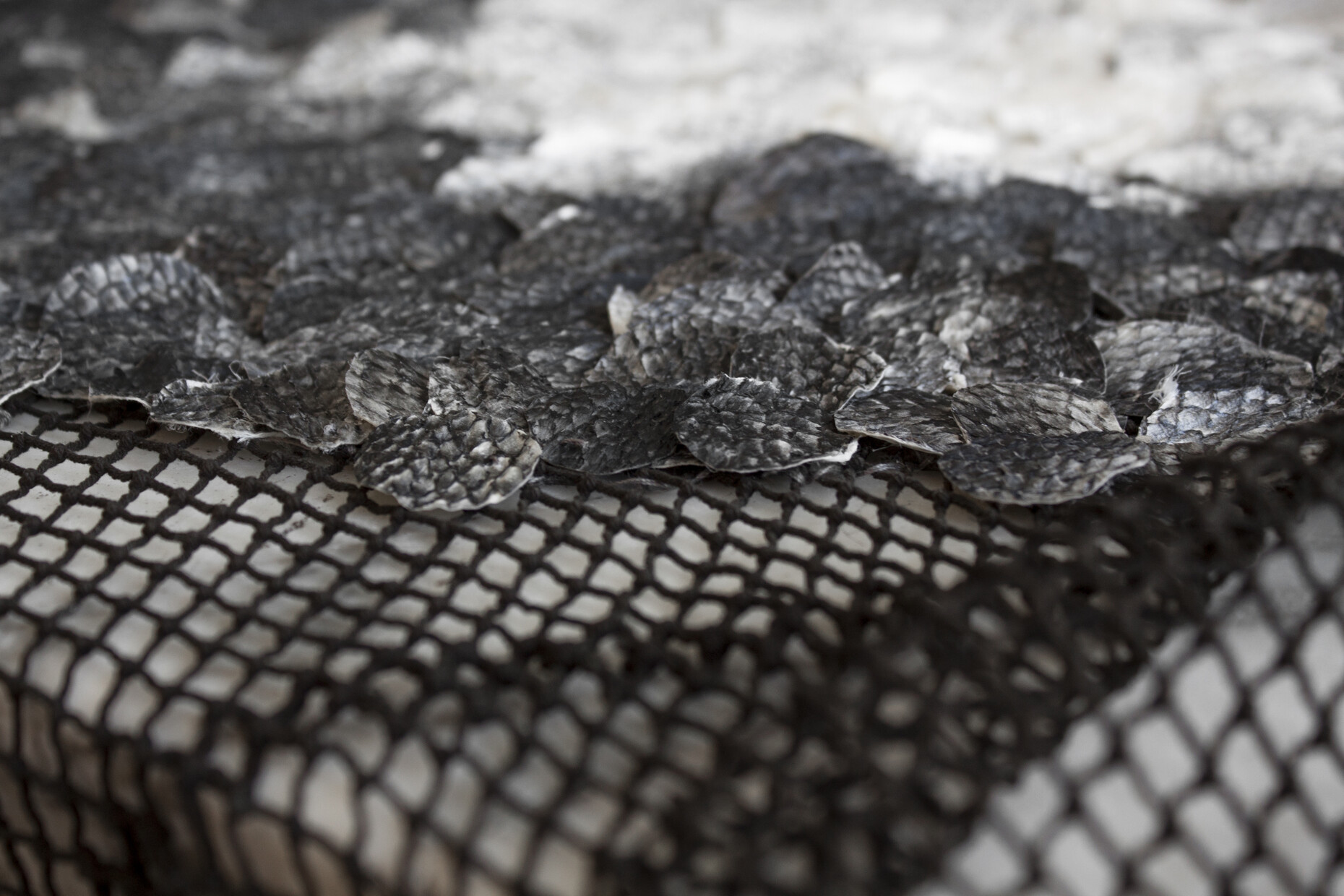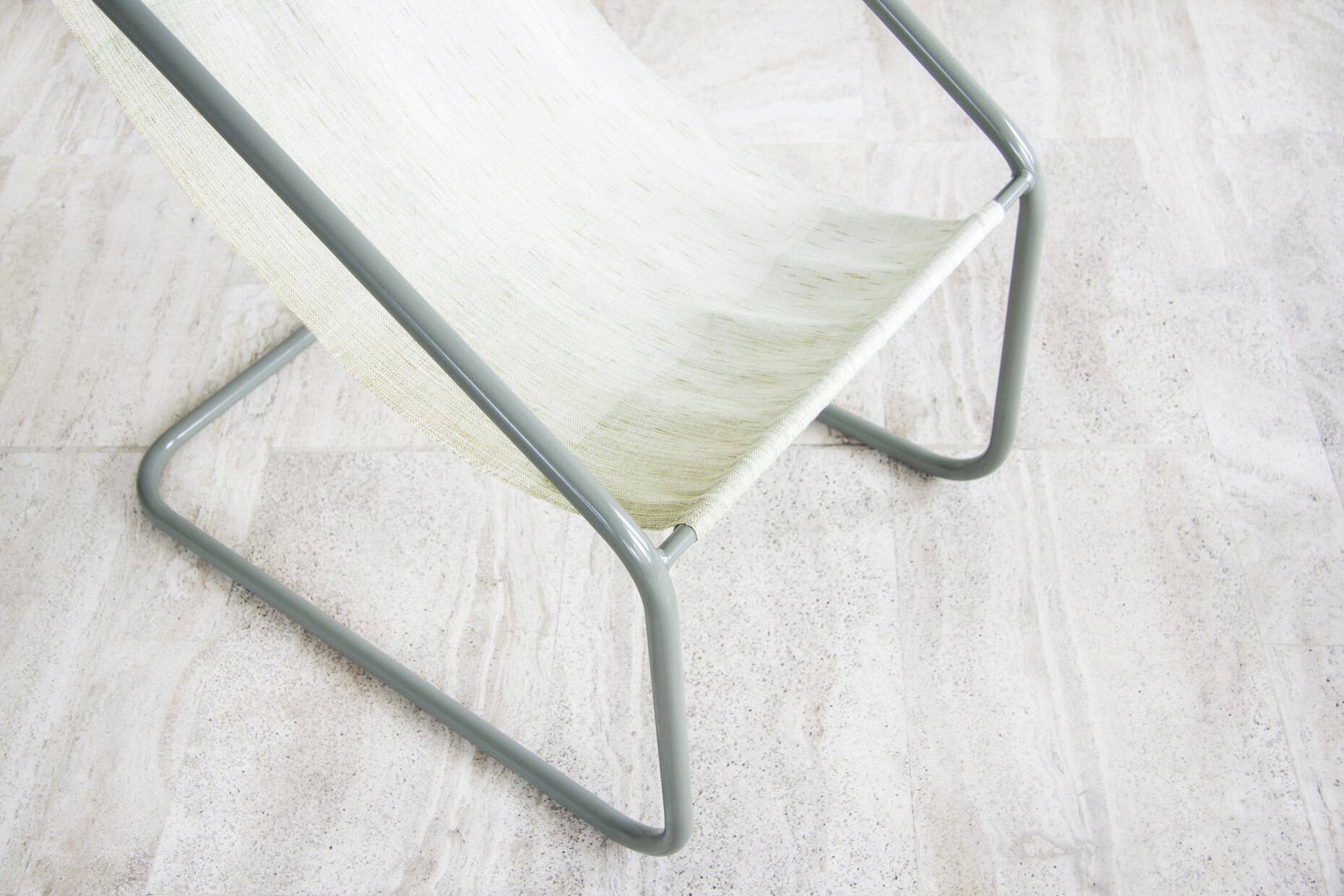Sustainability
Designs from nature
A stool made of salt – can such a thing work? This question was raised by Erez Nevi Pana, who studied at the Holon Institute of Technology in Israel and the Design Academy in Eindhoven. “During a vacation on the Dead Sea I discovered a white mountain of salt in the desert,” recounts the 36-year-old. The salt is a byproduct of the extraction of potash and bromine, minerals and chemical elements from the waters of the Dead Sea. Every year, some 20 million tons accumulate in a pool at the “Dead Sea Works”, a potash salt facility there. “For me, this was the trigger for working with a material that nobody else wants,” explains Pana. He began by developing a series of salt blocks and tiles made of pure salt. Finally, he started immersing objects in Dead Sea water and cultivating structures made of salt at his studio. Pana allows the stable structures of the salt crystals to close around simple wooden stools, for example, as is the case with “Salts”. Moreover, in another experiment he has covered the seat structures with materials such as loofah, a member of the gourd family, as with the “Bleached” range for Friedman Benda.
Back to the roots
All over the world, something has started happening in design. Going back to the roots is what you might call it. Like Erez Nevi Pana, not only creatives, but also scientists and engineers are trying their hands at recovering and recycling natural materials and avoiding waste by discovering new uses for things. And this applies to almost every discipline, from furniture to crockery to packaging. Jessica Zinga, for instance, hopes to market fast food packaging made of seaweed that has been compressed and shaped. As the Australian design student puts it: “Seaweed is a sustainable material that does not need to be watered, using up fresh water, or to be treated with pesticides, and nor does it require fertile soil. And even if the ‘Sea Harvest’ packaging should end up back in the sea again at some point, that wouldn’t matter, all it would really be doing is returning to where it came from.” Seaweed, something in plentiful supply along the more than 7000 kilometers of Denmark’s coast, has also been utilized by Jonas Edvard and Nikolaj Steenfatt for their project “Terroir”. “We wanted to create new materials from local resources,” report the designers from Copenhagen. For their luminaires and chairs, they have developed a mixture of paper and seaweed. Dried, ground into powder and finally boiled, the seaweed forms a kind of paste which, together with paper, hardens into a cork-like material. In her project "Desintegra.me", Chilean designer Margarita Talep Follert has developed a bioplastic using raw materials from algae that could serve as a sustainable alternative to disposable packaging and is completely biodegradable. For dyeing, the skins of fruits and vegetables such as beetroot or blueberries are used.
In Holland one of the things that Nienke Hoogvliet is interested in is seaweed. As the designer from Delft explains to us, since her childhood the Atlantic has always fascinated her, the interplay of ebb and flow, those slippery green plants that are washed by the water. And so she started experimenting with these primeval plants, observing the changes in the plants’ structures at different temperatures, drying them and processing them into fibers or powders. For her carpet “Sea Me”, she hand-knotted seaweed yarn into an old fishing net. It is an unusual hint at something beautiful, inside which something dramatic is lurking, the contrast between environmentally harmful plastic waste and the aesthetic substances the sea provides us with. In this seaweed yarn Hoogvliet sees a solution to the sustainability problems in the textile industry, because the material grows much more quickly and needs fewer nutrients than, for instance, cotton. Algae, too, are suitable for making natural dyes, and can be used to dye textiles green, brown, gray, pink and even purple. In order to highlight the enormous potential of these materials, Hoogvliet has designed a chair and a table – the seat of the chair is made of seaweed yarn and dyed with algae, while the yarn was handwoven to make a seat. The leftovers from this process were used to make the paint for the tabletop.
And the sea offers yet more raw materials. Phoebe Quare, for example, grinds the shells of common mussels into fine white plaster from which she casts luminaires. Jade Ruijzenaars prefers shrimp shells. She processes this transparent natural material, which contains the polymer chitin and is already sought after in the packaging and cosmetics industries, into an environmentally friendly ceramic glaze. Moreover, fish skin is once again in demand, a material that is as flexible as it is durable, with its interesting patterns and the lovely way that it shimmers. At the moment, most of it is tipped back into the sea by the fishing industry, but the Dutch commercial fish leather agency Nyvidd, which obtains most of its goods from Icelandic fish farms, aims to extend this sustainable leather alternative to furniture, accessories and bags. “I hope,” explains Cees van de Ven, the proprietor of Nyvidd, “that the designers’ work will inspire other disciplines and other manufacturers to investigate new approaches and materials. It should be a matter of course for us not only to take but also to give something back.” The British James Dyson Award recently went to Lucy Hughes for her research into a compostable alternative to disposable plastic from fish waste.
Coffee, bark, pine needles and clay
Back on land, with his label “Kaffeeform” Julian Lechner manufactures cups such as the “Weducer Cup” made of coffee grounds. While he was studying design in Bolzano, he experimented with the remains of the numerous cups of espresso he used to consume. The composite out of which he now has his coffee-scented drinking vessels molded has no need of bonding agents derived from petrochemicals. Instead he uses biopolymers, starch, cellulose, wood, natural resins, waxes and oils. The drinking vessels are dishwasher-safe and easy to recycle. Anastasiya Koshcheeva from Siberia established her label Moya in Berlin in 2012. In order to combine traditional Siberian handcraft with modern design, she processed birchbark. When their bark is harvested, the trees in the Siberian taiga are not damaged and can continue to grow. The material is antibacterial and extremely light, and can be used for covering the seat and backrest of the lounge chair “Sibirjak”, as well as for both the storage jars “Tuesa” and the lampshade “Svetoch”.
And there’s more: One of the raw materials that Ukrainian label Faina has opted for is clay. Clay has a long tradition in the country and represents a tried-and-tested material for benches and beds, for example. “Ztista”, meaning dough, is the name of a new furniture line by Victoria Yakusha, for which she has combined recycled metal, cellulose, wood chips and clay. When developing these design pieces, Yakusha collaborated with local artisans who use a 300-year-old modeling technique known as “valkuvannia”. This primitive rolling technique was also used in the construction of the traditional Ukrainian hut, the “mazanka”, and includes a coating of a hard surface made of a mixture of straw, hay and natural clay. Lithuanian designer Tamara Orjola is doing her bit to contribute to an eco-friendly future by using pine needles as an alternative for all kinds of fibers. Pine trees are the most important source of wood globally, with some 600 million trees felled annually in the EU alone. Their needles make up between 20 and 30 percent of the bulk of these trees, and through grinding, soaking, steaming, carding, packing and compressing, they can be transformed into textiles, composites and paper. Under the name “Forest Wool”, Orjola has developed an elegant range of stools and carpets made of pine needles, which give this ecologically sound material its own particular look. Thomas Vailly from Eindhoven, meanwhile, has turned his attention to the remains of sunflowers, which he uses to make both insulation boards and protective covers for smartphones. Organoid, an Austrian company, uses a complex manual process to apply natural materials such as mountain hay mixed with organic bonding agents to various backing materials such as flat laminates, self-adhesive films, fleeces, fabrics and textiles. This means that the materials’ natural characteristics – their smell, feel and appearance – are largely preserved.
Nowadays, cyclicality is one of the words on everybody’s lips when talking about sustainability. Materials such as clay, coffee grounds, seaweed and sunflowers come from nature and, once they have fulfilled their purposes, can be returned to where they came from – without impacting negatively on the environment. Here, there are virtually no limits to designers’ creativity and the variety of possible designs is still nowhere near exhausted.
